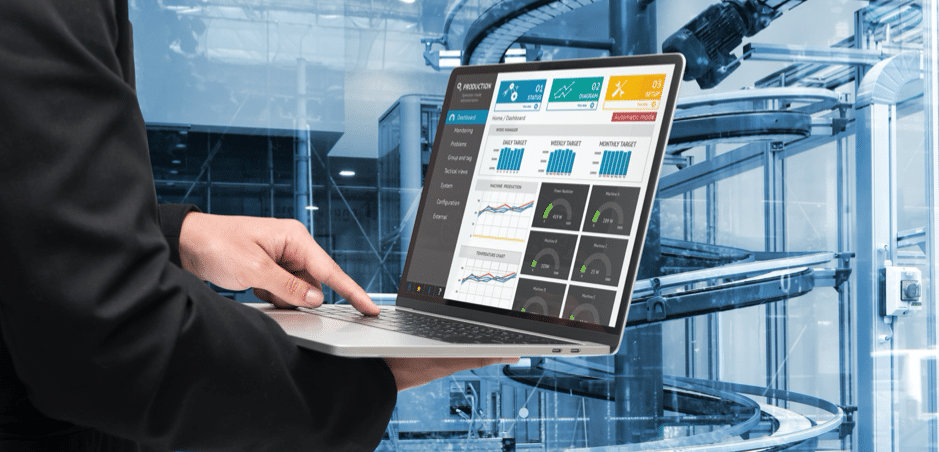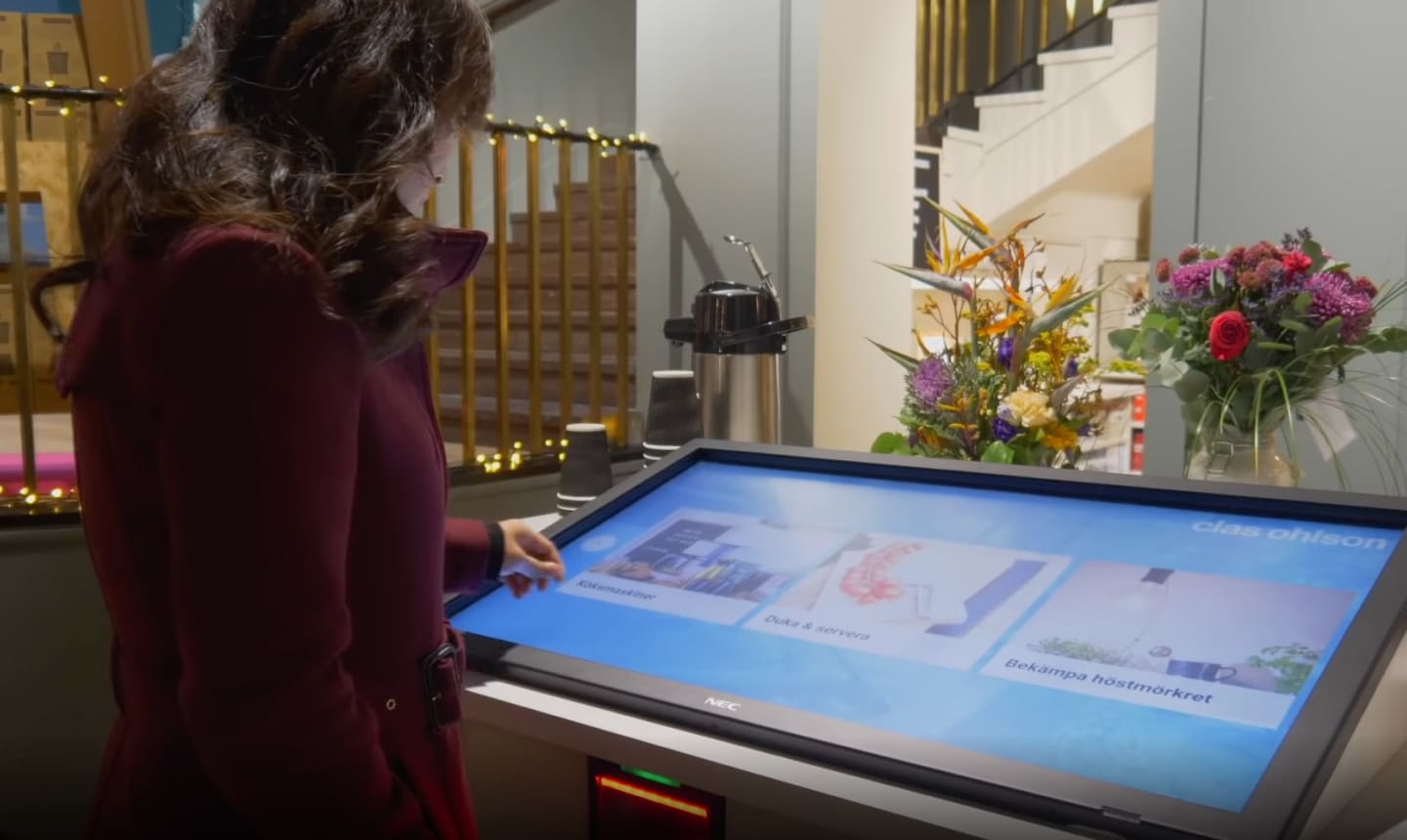Virtualisation for graphics-intensive workflows
Virtualisation for graphics-intensive workflows

By Kewal Gupta
26th May 2022
How IMSCAD is helping to integrate true Virtual Desktop Infrastructure (VDI) solutions for architectural and design firms across the globe.
IMSCAD is one of the world’s leading specialists in graphics virtualisation. The company has a close working relationship with its customers and suppliers, including partnerships with Autodesk and SolidWorks. Additionally, it acts as the CAD consultant to many leading Citrix and VMware virtualisation specialists.
IMSCAD has the remote capabilities to roll out projects across the globe, thanks to its locations in London, New York, and Zurich. They deliver virtualised applications and desktops to architecture, design, and manufacturing firms. “We’ve done much work with smaller practices with systems that range from just one server and ten users,” says IMSCAD CEO Adam Jull, “but the biggest is currently for 3,500 users, rolled out across 80 offices.”
With over 500 successful projects completed, IMSCAD can draw upon unrivalled experience in deploying CAD applications in virtualised environments.
One notable project has been for Parkhill, a multidiscipline architecture and engineering firm in the USA with more than 300 creative, technical, and support personnel. Parkhill provides collaborative and innovative services to the public sector alongside private healthcare providers, faith-based organisations, and commercial clients.
With a remote architectural workforce in multiple locations, Parkhill decided to investigate virtualisation as a potential solution to complement their growing workflow demands. Parkhill reached out for support from IMSCAD because of their specialist knowledge in virtual graphical software deployments.

Following IMSCAD’s consultancy advice, Parkhill invested in sixteen physical servers running Nvidia RTX8000 GPUs, supported by a 3Par storage array. IMSCAD configured and optimised the host servers and migrated the environment to a fully virtualised production infrastructure. This approach culminated in a new, robust, fully functional VDI graphics environment optimised for Parkhill’s high-intensity CAD workflows. Parkhill has now moved confidently into deployment for over 300 users.
Parkhill can now efficiently share its complex and graphically intensive data from any office location. The VDI system is accessible to all Parkhill team members, providing seamless communication between internal and customer teams.
Are you thinking of moving your CAD workflow to a virtualised infrastructure?
Try the IMSCAD NVIDIA vGPU Guided Demo and see how their VDI solutions can deliver impressive performance. The demo includes a consultation and a review with an IMSCAD specialist, so you can fully evaluate the IMSCAD VDI solution and how it can help improve your graphics-intensive workflows.
Latest articles
March 21, 2024
Channel Tools Announces Strategic Partnership with mpro5 to Enhance Operational Efficiency and Innovation
mpro5 allows customers to quantifiably improve operational efficiencies through cost savings,…
March 8, 2024
Unlock the Power of Intelligent Search with IntraFind
Embrace the power of intelligent search with IntraFind and unlock new possibilities for your…
February 2, 2024
Unlocking Retail Success with EVERYANGLE’s Aurora: The Ultimate Retail Analytics Suite
Unlock the full potential of your retail operations and embark on your journey towards sustainable…
Join our Partnership Program
There are many benefits partnering with us. Simply complete the form at the bottom of this page to discuss how the program can sky-rocket your visibility in any technology market place. We have huge experience in the creation of new channels – and we can create introductions, leads and business opportunities for your sales teams.
Want to know how a Channel Partnership could benefit your business?
Complete the form below and one of our team will call you back:
Smart Building Monitoring & Control Solutions
Smart Building Monitoring & Control Solutions

By Kewal Gupta
20th April 2022
Smart Building Monitoring Solutions offer innovative technologies for intelligent building monitoring and control. Modern systems use advanced analytics, AI-driven insights and IoT devices to give housing providers, facilities managers, and developers total peace of mind.
Anyone responsible for managing a building, campus or even a town or city can achieve significant insights with dynamic asset visibility and real-time alerts for a complete site overview. Decision making becomes quicker and more accessible, saving costs, reducing incident severity, and solving problems before they can develop.
Intelligent building monitoring systems can track fire risks across multiple facilities in cities, towns, or campuses by tagging assets such as smoke and fire detectors, heat sensors, and fire doors.
Benefits of a Building Monitoring System at a glance:
- Reduce costs and identify energy-saving opportunities
- Identify carbon footprint reductions
- Gain complete visibility of buildings in real-time
- Remotely control building environment and safety systems
- Reduce issues caused by human error
- Automatically comply with legal and safety standards throughout an entire estate
Smart Building Monitoring & Control Systems
Upgrading your building processes and capabilities has never been simpler. Smarter building systems can drastically enhance your operation, allowing you to keep costs low and productivity high.
Using smart building sensors, facilities managers can achieve complete visibility and transparency over all aspects of an estate.
From energy monitoring to EV charging stations, systems from vendors such as Smarter Technologies can deliver smart building solutions that can transform facilities management tasks from reactive to proactive.
Automating buildings compliance reports
Protecting public health and preventing contamination are some of the most critical considerations for building managers. Additionally, as environmental legislation for building design continues to develop, managers are increasingly looking for ways to streamline the monitoring of environmental control systems while reporting on maintenance and routine cleaning.
Systems such as the Orion Network from Smarter Technologies provide an intelligent platform to automate many of the time-consuming upkeep practices that burden facilities managers and allow them to generate schedules and reports instantly.

Introducing Smarter Technologies’. The affordable smart building management platform.
With Smarter Technologies’ innovative building monitoring solutions, users can achieve 360-degree visibility of their entire building estate. The platform delivers real-time notifications, event-triggered alarms, asset tracking and more.
By harnessing the power of the Smarter Technologies Orion Data Network, users can monitor their entire estate, asset by asset, within a fully configurable dashboard.
How the Orion Data Network compares
The Orion Data Network is a low-power, long-range, real-time tracking, and monitoring network that’s in use worldwide. The military-grade communication technology runs on low-power radio and sends real-time, automatic updates to the user’s dashboard.
The Orion tags can be placed on any assets and work with gateways to provide a succinct overview of all the estate’s assets, including usage, location, and activity within the dashboard.
Users also receive instant alerts and notifications for important events and triggers, such as heat or fire alarms, water leaks, after-hours motion, temperature fluctuations, or any other unusual events.
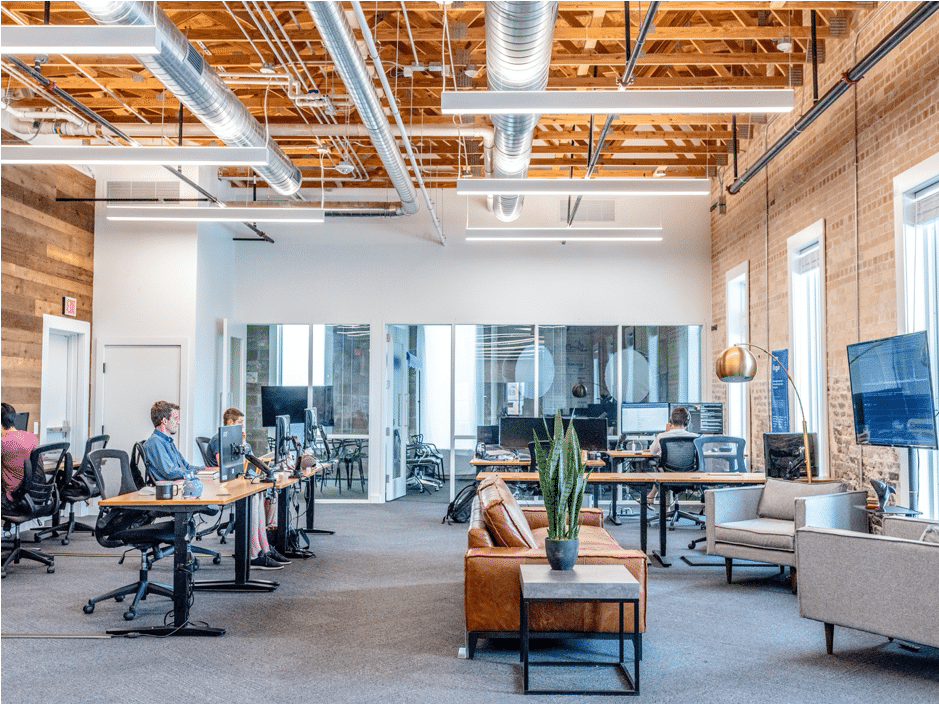
Why choose Smarter Technologies’ Orion Data Network?
SIM Free
No GSM associated costs and smaller devices.
Lower frequency than GSM
Tags are visible anywhere and everywhere.
Lower power requirements
Tag batteries last for years
Multi-functional tags for every type of asset
Easily track location, usage, temperature, movement or shock.
Remotely configurable
Tags can receive updates in any location.
Coverage
Tags are reachable from 500m to 10km per gateway.
Zero failure
Tags can switch automatically from digital to analogue to increase recovery capabilities and accurate location finding.
Rapid infrastructure deployment
The Orion Data Network is wireless and can be installed quickly.
Smart Building Monitoring Examples
Automated Legionella Compliance
Smarter Technologies delivers a unique and effective automatic flushing and temperature testing system, controlled via a platform and dashboard, ensuring compliance with Legionella testing requirements. Users can schedule tests easily, with detailed compliance reports generated automatically.

Asset tracking and monitoring
Smarter Technologies tags help facilities managers monitor their assets’ location and usage anywhere within their estate. With dynamic control and efficient reporting on your assets, you will benefit from insight-driven decisions that promote profitability.
Smart Lighting
The smart building monitoring and control platform leverage smart LED lighting to give users ultimate control of their lighting systems. Users can choose from any colour and lighting temperature. More importantly, they can set specific operation times with automatic shutdown whenever any part of the building is empty for a specified amount of time.

Occupancy and Traffic Monitoring
Smarter Technologies’ ground-breaking building traffic monitoring systems allow managers to monitor their buildings and staff with real-time information on room occupancy, hot desk usage, vehicle car park thresholds and more. The system enables users to proactively manage their workforce, making the best use of space in smart buildings, improving energy efficiency, and encouraging better collaboration.
Building Energy Monitoring Systems
The unique Orion Data Network and building energy monitoring software allows users to monitor utilities and identify where energy is being wasted. Additionally, the system alerts users to cost-saving opportunities and carbon footprint reduction ideas. Managers can benefit from automatic electricity load balancing, sub-metering solutions and peak power output control.
Air Monitoring
Managers can observe and monitor the air quality within a building to comply with legislation while protecting staff in line with health and safety regulations. The Smarter Technologies’ platform uses outdoor sensors to monitor the air for pollutants. In contrast, indoor sensors are perfect for insulated buildings where air quality can be affected by high occupancy levels.
Building Temperature Monitoring Systems
The Orion Data Network uses smart thermostats connected to the platform to offer real-time temperature monitoring and direct control capabilities within rooms, floors, buildings, and estates. Managers can also gain granular HVAC control and comply with minimum and maximum threshold warnings for fridges and freezers.
Building Fire Safety Monitoring Systems
Facilities managers can automatically use the Orion Data Network and the Smarter Technologies platform to run checks on fire safety equipment automatically. The intelligent sensors can remotely monitor fire doors, fire extinguishers, alarms, and smoke detectors, alerting users immediately to any change of condition.

Creating smarter buildings that you can control
This article has sought to highlight some of the main use cases of Smarter Technologies’ smart building monitoring solutions. With the Orion Data Network, 360° building management becomes a reality for facilities managers and estate owners, regardless of scale, industry, or application.
Smarter Technologies is working with Tech Data and Channel Partnerships. Channel Partnerships can set up a meaningful and tailored demonstration that will show Smart Technologies’ solutions working for a real-world evaluation.
Contact Channel Partnerships directly by calling: 01923 618099
Or email: info@channel-tools.biz
Latest articles
March 21, 2024
Channel Tools Announces Strategic Partnership with mpro5 to Enhance Operational Efficiency and Innovation
mpro5 allows customers to quantifiably improve operational efficiencies through cost savings,…
March 8, 2024
Unlock the Power of Intelligent Search with IntraFind
Embrace the power of intelligent search with IntraFind and unlock new possibilities for your…
February 2, 2024
Unlocking Retail Success with EVERYANGLE’s Aurora: The Ultimate Retail Analytics Suite
Unlock the full potential of your retail operations and embark on your journey towards sustainable…
Join our Partnership Program
There are many benefits partnering with us. Simply complete the form at the bottom of this page to discuss how the program can sky-rocket your visibility in any technology market place. We have huge experience in the creation of new channels – and we can create introductions, leads and business opportunities for your sales teams.
Want to know how a Channel Partnership could benefit your business?
Complete the form below and one of our team will call you back:
From Smart Buildings to Smart Cities
From Smart Buildings to Smart Cities
Learn how Smarter Technologies’ low-frequency network is helping organisations wirelessly monitor and control assets up to 10km away.

By Kewal Gupta
1st April 2022
While for most of history, making a building or campus area “smart” has meant investing in sustainability and energy efficiency, and approaches have recently focused more on ICT-enabled Smart building solutions.
Recent developments in Cloud and IoT technologies alongside new low-frequency connectivity have reached a maturity that can enable many new Smart Building services for the first time and extend the range of monitoring beyond the campus.
Smart Building solutions already go beyond traditional Building Automation Systems by leveraging common, horizontal platforms that enable data sharing across the various systems and services. They form a vital component within the overall Smart City ecosystem, connecting to and supporting many other application areas thanks to the range delivered by the latest wireless networks.
Why are Smart Buildings beneficial?
Smart Buildings bring cost savings, efficiency and sustainability improvements, and better health and well-being for occupants. Smart Buildings help increase the convenience of living or working in a building and improve the overall quality of living throughout an intelligent campus environment.
Ultimately, for property owners to reap the benefits of Smart Buildings for their business, they need to partner up with the right companies to assist them in implementing the different layers of the Smart Building framework. Smarter Technologies’ is one provider that can deliver the technical and industry expertise to deliver increased value in making buildings intelligent.
Smarter Technologies’ network and asset tags can drastically enhance the day-to-day operation of any enterprise, allowing managers to keep costs low and productivity high. Using the latest range of intelligent building sensors, building owners get complete visibility and transparency over all aspects of their buildings and assets.
Reaching further with Smarter Technologies’ Orion Data Network.
The Orion Data Network from Smarter Technologies’ is a low-power, long-range, real-time global tracking and monitoring network. The proprietary, military-grade communication technology runs on low-power radio, and the intelligent sensors, tags, and gateways deliver real-time, automatic updates to each user’s bespoke management dashboard.
When placed on assets within a building, Orion tags work with the gateways to provide a succinct overview of all the tracked assets, their usage and output on one bespoke dashboard. Users also receive instant alerts and notifications for important events and triggers, such as water leaks, after-hours motion, temperature fluctuations, or other unusual circumstances.

Advantages of the Smarter Technologies’ Orion Data Network
SIM Free
There are no GSM associated costs with the Smarter Technologies’ Orion Data Network.
Lower frequency than GSM
Thanks to the low-frequency signal, the tags on your asset network are visible no matter where they are (inside a building or room, corridor and even an elevator).
Reduced power requirement
The Smarter Technologies asset tags have enough power to last for years, so there is no need to swap out batteries or charge tags constantly.
Multi-functional
The intelligent asset tags from Smarter Technologies can track assets that indicate temperature, movement, shock and more.
Remote configuration
Asset tags can receive messages in all locations, including heavy data packets and configuration settings.
Coverage
Each gateway can deliver coverage from 500m to 10km, covering an entire town, city, or campus.
Recovery ability
The asset tags and gateways can easily switch from digital to analogue modes to increase recovery capabilities and accurate location finding.
Rapid deployment of infrastructure
The Orion Data Network allows for straightforward and rapid deployment no matter the scale of the location, thanks to its wireless infrastructure.
The impact of environmental legislation on smart building technologies.
Environmental and Health Compliance demands drive organisations to turn to Smarter Technologies’ innovative building programs. Protecting public health and preventing contamination has become a significant focus area for building owners.
At the same time, keeping track of local and national changes in compliance is becoming onerous for building managers. To alleviate these challenges, the platform from Smarter Technologies automates many of the time-consuming maintenance and monitoring practices that managers experience and allows them to handle compliance from within an easily accessible application.
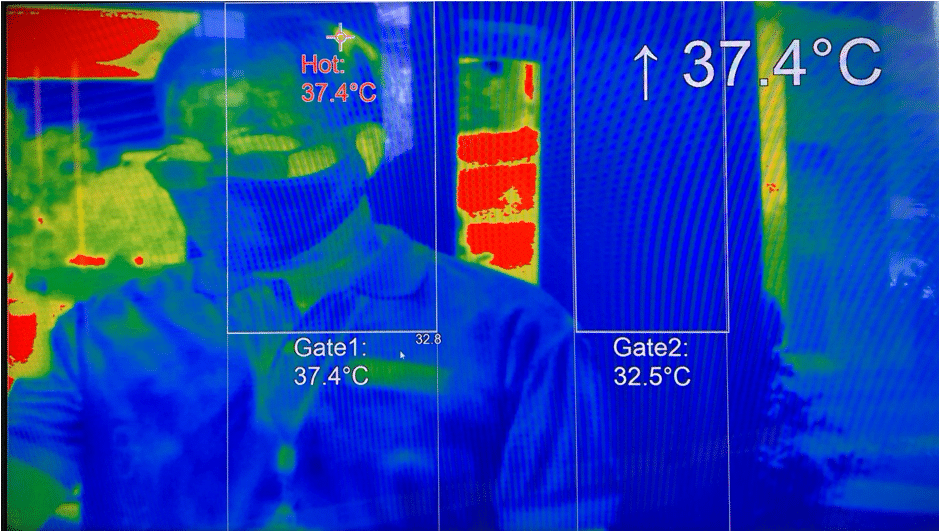
With Smarter Technologies’ building monitoring solutions, users can gain complete visibility of their entire estate with real-time notifications, alarms, and asset tracking. Harnessing the power of the Smarter Technologies’ Orion Data Network, users can observe and monitor their entire estate, person by person and asset by asset, from within a single interface.
Smart Building Monitoring Examples
Legionella Monitoring and Compliance
Smarter Technologies offers unique flushing and temperature testing system controlled via an intelligent platform. Users can ensure that their business stays within Legionella compliance regulations by efficiently scheduling tests and generating automated reports.
Smart Asset Tags
Users can run equipment more efficiently with Smarter Technologies’ intelligent tags, which allow them to track everything they need in their buildings. With dynamic control and efficient reporting across all assets, users benefit from insight-driven decisions that promote profitability.
Smart Lighting
Managers can easily switch out their current bulbs with Smarter Technologies’ intelligent LEDs, giving them ultimate control of their lighting systems. Users can choose from any colour and lighting temperature, and more importantly, they can set specific operation times with automatic shutdown whenever areas of the building are vacant.
Occupancy and Building Movement Monitoring
Smarter Technologies’ ground-breaking building movement monitoring system allows users to monitor buildings and staff with real-time information on desks, meetings rooms and other facilities. Intelligent monitoring enables users to securely manage their workforce, proactively making the best use of space and availability, improving energy efficiency, and encouraging staff collaboration.
Building Energy Monitoring System
The state-of-the-art Orion Data Network and building energy monitoring software allow users to monitor their building’s utilities to identify where energy and cost savings are available. Additionally, the monitoring can help users identify where they can further diminish their carbon footprint. You’ll benefit from automatic electricity load balancing, sub-metering solutions and peak power output control.
Air Quality Monitoring
Users can observe and monitor building air quality to comply with legislation while protecting staff according to health and safety regulations. Our outdoor sensors monitor the air for pollutants, and indoor sensors are perfect for insulated buildings where high occupancy affects air quality.
Building Temperature and Humidity Monitoring Systems
Smart thermostats connected to the Orion Data Network offer real-time temperature control in an intelligent building. Managers can also gain complete HVAC control and comply with minimum and maximum threshold warnings for fridges and freezers.
Fire Safety Equipment Monitoring
Users can keep their buildings safe and compliant with fewer time-consuming and labour-intensive manual checks on fire safety equipment. The Smarter Technologies’ intelligent fire equipment sensors can monitor fire doors, fire extinguishers and smoke detectors – alerting managers immediately if any change of condition occurs.
—
Smarter Technologies is working with Tech Data to help organisations evaluate the Orion Network and their Smart Building technologies.
Channel Partnerships can set up a meaningful and tailored demonstration that will show Smarter Technologies’ solutions working for a real-world evaluation.
Contact Channel Partnerships directly by calling: 01923 618099
Or email: info@channel-tools.biz
Latest articles
March 21, 2024
Channel Tools Announces Strategic Partnership with mpro5 to Enhance Operational Efficiency and Innovation
mpro5 allows customers to quantifiably improve operational efficiencies through cost savings,…
March 8, 2024
Unlock the Power of Intelligent Search with IntraFind
Embrace the power of intelligent search with IntraFind and unlock new possibilities for your…
February 2, 2024
Unlocking Retail Success with EVERYANGLE’s Aurora: The Ultimate Retail Analytics Suite
Unlock the full potential of your retail operations and embark on your journey towards sustainable…
Join our Partnership Program
There are many benefits partnering with us. Simply complete the form at the bottom of this page to discuss how the program can sky-rocket your visibility in any technology market place. We have huge experience in the creation of new channels – and we can create introductions, leads and business opportunities for your sales teams.
Want to know how a Channel Partnership could benefit your business?
Complete the form below and one of our team will call you back:
Pfizer Uses Komprise Analytics and Transparent Move Technology to Cut Storage Costs by 75%
Pfizer Uses Komprise Analytics and Transparent Move Technology to Cut Storage Costs by 75%

By Kewal Gupta
16th March 2022
Pfizer turned to Komprise to create an intelligent data strategy to manage their migration to AWS and leverage cloud efficiencies without disrupting applications or users.
Komprise delivers a unique cloud data management service that allows users to analyse quickly and access stored data and object data across clouds without shackling that data to any vendor. The Komprise Intelligent Data Management platform helps users take control of vast amounts of growing unstructured data while cutting on average 70% of enterprise storage, backup, and cloud costs.
Pfizer is one of the world’s premier biopharmaceutical companies responsible for creating life-saving vaccines, including the Covid-19 vaccine. Pfizer had 5 petabytes of unstructured data in scope for its cold data strategy, 64 per cent of which hadn’t been accessed for more than two years.
With no end in sight to their rapidly growing data demands, the company needed a plan for moving their cold data to the proper storage solution. Komprise helped Pfizer quickly determine what data was truly cold – and then easily tier those files to Amazon Web Services (AWS), drastically cutting costs while creating a global tagged data lake to drive research and innovation.
Importantly, for a company that relies heavily on data for research and testing, the initiative resulted in zero changes in how users and applications access the moved files.
“Amazon S3 provides a great foundation – the water in the data lake – that can help customers build on other services such as analytics, which integrate seamlessly with Amazon S3 and, with Komprise, can help customers unlock the value of that cold data.”
Anthony Fiore, Senior Migrations Solutions Architect, AWS
Pfizer’s existing on-premises storage environment is a global heterogeneous NAS environment. Pfizer’s team needed constant visibility, a strategy for applying business rules for analytics, and better insight into their data storage and hosting.
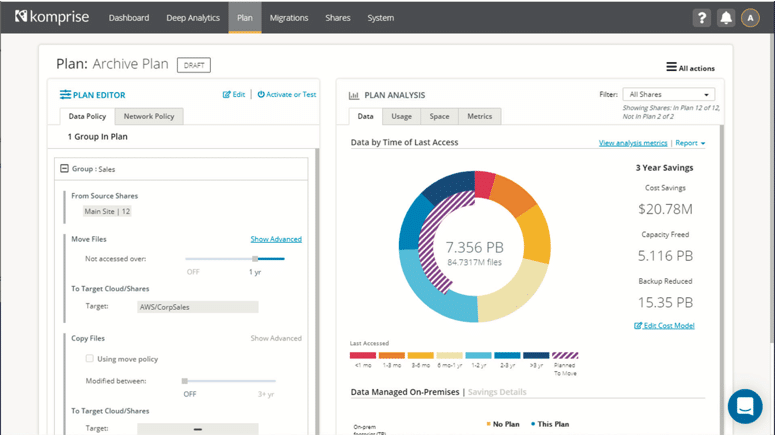
“With data growing exponentially, we wanted to look at a better way of using analytics, to have data on a highly available platform still, but to make investments where it makes sense,” explained Matthew Braunstein, Director of Hosting Data Services at Pfizer. “And where it doesn’t make sense to have a highly available platform, push it to a more cost-effective platform.”
Komprise gave Pfizer a way to analyse all its data quickly and transparently tier cold files to AWS, cutting costs while building a global tagged data lake to drive business innovation.
“What sets Komprise apart compared with other solutions is the end-to-end process of analysing and moving data,” said Caitlyn Possehl, Global Strategic Alliance Leader at Komprise. “You can use Komprise to scan all your data, analyse costs and create business rules and then Komprise will act automatically against those rules.”
With a focus on research data on NAS, Pfizer found large amounts of data eligible for tiering. Komprise analytics helped Pfizer decide which data should be tiered to AWS by understanding what data was on NAS, who was using it, how much was cold, and what kind of data it was.

Komprise Intelligent Data Management deployed in Pfizer’s on-premises NAS datacentre and archived data to Amazon Simple Storage Service (Amazon S3). Pfizer’s cost savings in the first 90 days alone were enough to cover the total cost of the Komprise solution.
Komprise helped Pfizer stop 20 years of increasing storage costs in its tracks. Komprise used analytics across multi-vendor storage environments to manage Pfizer’s data management and data movement to AWS. In the last year alone, Pfizer has migrated two petabytes of cold data to Amazon S3. They could tier unstructured cold data to the cloud without affecting or changing how users access it, which was crucial in the research and testing process.
The Komprise dashboard and management tools allow visibility, with a colour-coded data status and age, so the different stages of the data are identifiable.
“Many times, I come in and feel like it’s Christmas morning because we had planned 100TB to go out the door, and it’s 115TB because Komprise did their next scan and pulled some data I wasn’t counting on that aged out.”
Matthew Braunstein, Director of Housing Data Services, Pfizer
Pfizer now uses Komprise Deep Analytics to build different searches and queries on their data so they can create data lakes in AWS for further use in the cloud, leveraging insights from big data and AI, genuinely unlocking the data’s potential.
“It’s exciting that our researchers want to accelerate data movement using Komprise because they can analyse the data on AWS,” says Braunstein.
The Pfizer solution also deployed the patented Transparent Move Technology (TMT) from Komprise, which helps users migrate, tier and replicate data across multi-vendor storage and clouds – while enabling native use of the data at each layer. Data movement in this way is possible without disrupting users and without vendor lock-in.

Komprise is the only vendor that provides transparent tiering from the source storage array while including native access to the cold data on the target – without getting in front of the live data.
Files moved by Komprise TMT appear exactly as they did before, without users noticing any difference other than a link icon. They open like normal files on the desktop and don’t employ stubs or agents.
Key benefits of the Komprise solution include:
Clear access to moved files from the source storage device without obstruction.
- TMT moves files by policy to secondary storage of your choice, such as the cloud. The solution leaves an industry-standard dynamic link that represents the source data.
- Users and applications can still access and open the moved files from their original location by using these dynamic links without seeing any alterations.
File-object duality is preserved.
- The Komprise solutions allow moved files to remain natively accessible as cloud objects.
- When Komprise TMT moves a file to object storage such as Amazon S3, it writes the entire file as an object, unlike storage-based tiering. This means that users can directly access their moved data and extract more value from their static data.
Zero obstruction of hot data.
- Komprise TMT moves data using standard protocol constructs, so it is not in the hot data path, unlike storage tiering, global file storage gateways and data virtualisation solutions.
- Komprise is called when cold files are accessed, which happens rarely. This improves primary storage performance and allows you to run data analytics versus your file storage in the cloud.
No use of Stubs, Agents, or Proprietary Interfaces.
- Komprise Dynamic Links contain all the file system information a user or application requires in a simple, scalable format.
- No stubs or agents that are brittle and problematic to manage. No central database. Learn more about the fault-tolerance and load balancing of the Komprise Elastic Grid.
Minimise rehydration and egress fees.
- Komprise TMT moves data at the file level with the file metadata fully preserved at the target, so the transferred data is accessed as files from both the source and the target.
- With Komprise, you can use files in the cloud for file-based applications without bringing data back to the original NAS. This has the added benefit that your big data analytics projects don’t tax your primary NAS.
It helps to establish a layered defence against ransomware.
- Komprise customers can use immutable cloud storage via AWS S3 Object Lock to provide another layer of defence against ransomware.
- Komprise enables organisations to protect file data from ransomware at 80% lower cost through a combination of transparent cloud tiering and replication of all data to an object-locked location with file-level isolation.
Overall, Pfizer saved over 75 per cent on storage and cloud migration costs by accessing the powerful analytics Komprise offers. Cost savings came from removing manual data management and having Komprise intelligently and automatically move cold data from high-priced, on-premises storage to more cost-effective storage on Amazon S3.
If it needs to, Pfizer can directly access the data in AWS as Amazon S3 objects natively without paying fees to Komprise or paying egress fees, further reducing cost concerns.
The business impact of data management with Komprise speaks for itself. Pfizer gained efficiencies across the organisation, and unlocked value from data moved to AWS, allowing them to reinvest those discovered resources into their central mission, driving better patient outcomes.

DOWNLOAD THE FULL CASE STUDY
Click here to download the Komprise case study in pdf format.
—
Channel Partnerships can set up a meaningful and tailored demonstration that will show the Komprise Analytics and their patented Transparent Move Technology™ working for a real-world evaluation.
Contact Channel Partnerships directly by calling: 01923 618099
Or email: info@channel-tools.biz
Latest articles
March 21, 2024
Channel Tools Announces Strategic Partnership with mpro5 to Enhance Operational Efficiency and Innovation
mpro5 allows customers to quantifiably improve operational efficiencies through cost savings,…
March 8, 2024
Unlock the Power of Intelligent Search with IntraFind
Embrace the power of intelligent search with IntraFind and unlock new possibilities for your…
February 2, 2024
Unlocking Retail Success with EVERYANGLE’s Aurora: The Ultimate Retail Analytics Suite
Unlock the full potential of your retail operations and embark on your journey towards sustainable…
Join our Partnership Program
There are many benefits partnering with us. Simply complete the form at the bottom of this page to discuss how the program can sky-rocket your visibility in any technology market place. We have huge experience in the creation of new channels – and we can create introductions, leads and business opportunities for your sales teams.
Want to know how a Channel Partnership could benefit your business?
Complete the form below and one of our team will call you back:
Retail AI Platforms
Retail AI Platforms
The growth in Predictive Insight & Security Systems for Modern Retail

By Kewal Gupta
25th February 2022
Recent studies have shown that the $15T global retail industry is suffering significant turmoil, but the most recent disruption from the global health crisis has caused the biggest shock of all. The global pandemic has highlighted the differences between retail businesses while seriously concentrating on digital transformation and e-commerce.
Additionally, the consumer revolution has sparked a search for convenience, better pricing, and improved customer experience, shifting consumers towards online-only shopping.
Retailers are now striving to unify online and offline shopping environments – which will require investment in new technology and an emphasis on trust.
As retailers reshape their landscape, hundreds of operational decisions will need to be made even more rapidly across the value chain. Retailers are turning to advanced technologies to protect their businesses, and inevitably these technologies will include both artificial intelligence and machine learning.
Retailing is shifting from a product-centric approach to customer-centric, experiential retail blending products, physical and digital services, personalisation, and unprecedented levels of convenience.
Advanced technologies will be central to retail transformation – from warehouse automation to robotic store associates and driverless car delivery. Consumers will soon expect automated and real-time service and fulfilment as standard.
Physical stores will continue to form an essential part of the retail shopping experience. They will, however, need to be transformed to offer more personalised experiences, from tailored services to showrooms, fitting rooms, and entertainment. The transition is already underway, but retailers must build consumer trust by treating data safely, delivering the right product quality, and providing a seamless experience from shopping to consumption and returns.

Choosing the right platform for today’s innovative store
Retailers are already taking advantage of the actionable insights that predictive AI platforms deliver.
For example, in a move to help global retailers achieve their smart store ambitions, SAP has partnered with G2K, a leading artificial intelligence platform provider and one of the top innovative companies in Germany. SAP and G2k’s collaboration is already rolling out a Smart Store for intelligent global retail operations.
In January, the “Intelligent SAP Mart” incorporating the G2K Parsifal AI platform was launched at the National Retail Federation awards in New York. The Parsifal platform underpins the foundation of SAP’s Smart Store solution, from intelligent shelf management to improved customer experience and sustainable energy management.
G2K’s Parsifal Platform has been designed to help retailers quickly understand complicated situations that usually demand a great deal of analysis and human resources to overcome. Powered by AI and Machine Learning, Parsifal can predict in-store patterns and instances before they happen – and helps managers overcome both security and customer experience issues.
Security Management
The Parsifal AI system employs intelligent camera systems to imperceptibly detect and predict activity that could be of a security concern to the retailer.
If an accident happens anywhere on the premises or somebody requires assistance, Parsifal will instantly recognise it and alert the systems to trigger rapid action.
When combined with advanced virtual perimeters, the system has precise knowledge of specific places and their people. If someone enters a no-go area, an alarm is triggered to alert staff and systems.
Advanced Access Control
The Parsifal platform offers advanced features that respect customer privacy without storing any facial information beyond matching it with your database of flagged customers.
So, if someone enters the premises you have banned, Parsifal will detect their faces and alert security. Conversely, if a VIP enters the building, Parsifal will point them out.
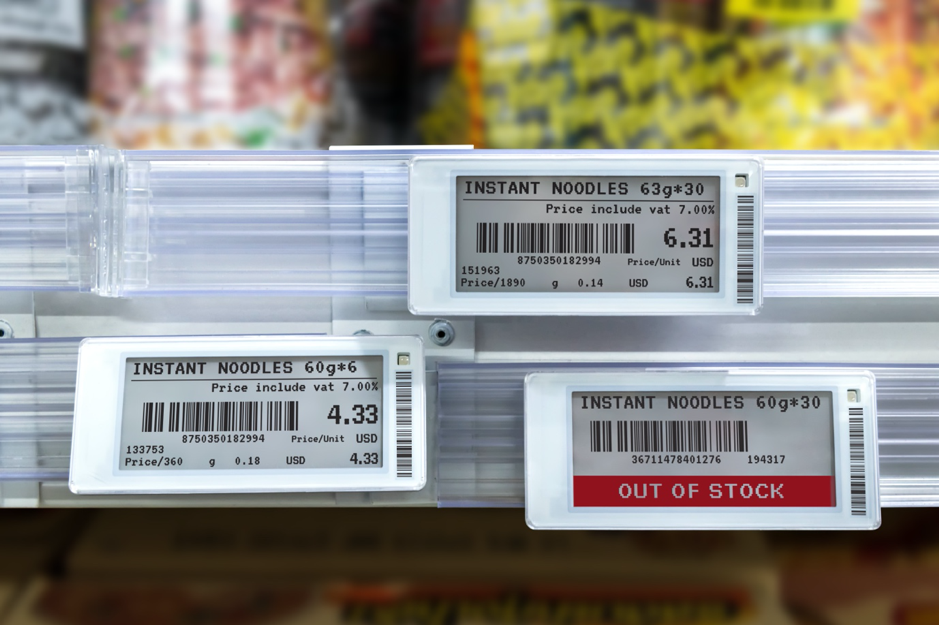
Much more than a customer management solution
Parsifal can recognise the gender and age of store visitors, providing important demographic insights while conforming to the highest data security. By providing retailers with heat maps of visitor flows, retailers can optimise their experience in terms of facilities, services, or shopping.
Additionally, Parsifal’s queue solution can minimise frustration with intelligent throughput management.
Parsifal can even parse the registration plates of vehicles in parking and loading areas, giving retailers precise control over traffic and parking management – and predicting traffic volumes. And by recognising the car brands, Parsifal can even estimate customer spending power.
Parsifal is a software platform that employs thousands of algorithms to process and parse data appropriately. Pattern recognition and interpretation happen in real-time, providing instant knowledge of any situation.
The knowledge produced by Parsifal materialises in different ways, depending on retailer preferences. Parsifal can provide instantaneous alerts in a security context when a dangerous situation looms. This knowledge can reveal insights into customer flow and behaviour in a retail context.
In conclusion, retailers worldwide are reshaping their strategies with AI to help consumers and deliver even more compelling and personalised experiences.
Advanced AI platforms such as the Parsifal solution from G2K can underpin retailer technology creatively, leveraging their data to help them deliver on new, unique journeys for their brands. Retailers can now benefit from these advanced AI technologies as they are integrated with more traditional retail systems such as SAP to build smarter, predictive retail environments.
Additionally, solutions from companies such as SAP and G2K mean retailers don’t need to have advanced data science and machine learning skillsets in house. SAP and G2K’s Parsifal solution delivers the robust AI platform that allows retailers to build their own Smart Store solutions and meet the unique needs of their customers.
Learn more about the G2K Parsifal solution
G2K Parsifal is an advanced AI Platform with use cases in Retail, Transportation, Events, Corporate & Industry, Hospitality and Smart City. In the UK, G2K is working in partnership with Tech Data and Channel Partnerships to help organisations evaluate the technology.
Channel Partnerships can set up a meaningful and tailored demonstration that will show the G2K Parsifal solution working for a real-world evaluation.
Contact Channel Partnerships directly by calling: 01923 618099
Or email: info@channel-tools.biz
Latest articles
March 21, 2024
Channel Tools Announces Strategic Partnership with mpro5 to Enhance Operational Efficiency and Innovation
mpro5 allows customers to quantifiably improve operational efficiencies through cost savings,…
March 8, 2024
Unlock the Power of Intelligent Search with IntraFind
Embrace the power of intelligent search with IntraFind and unlock new possibilities for your…
February 2, 2024
Unlocking Retail Success with EVERYANGLE’s Aurora: The Ultimate Retail Analytics Suite
Unlock the full potential of your retail operations and embark on your journey towards sustainable…
Join our Partnership Program
There are many benefits partnering with us. Simply complete the form at the bottom of this page to discuss how the program can sky-rocket your visibility in any technology market place. We have huge experience in the creation of new channels – and we can create introductions, leads and business opportunities for your sales teams.
Want to know how a Channel Partnership could benefit your business?
Complete the form below and one of our team will call you back:
Where digital experience meets physical spaces
Where digital experience meets physical spaces
How to create better customer experiences, streamline omnichannel operations, and manage visitor data with an intelligent SaaS based app platform

By Kewal Gupta
18th February 2022
Customers have become used to accessing a vast amount of product information at their fingertips simply by browsing online and on their smartphones. They are adept at accessing and comparing product features, reviews, and availability in their quest to make better purchasing decisions.
However, the personal touch has become lacking in physical purchasing environments such as retail stores and outlets. There is often no one to guide the consumer in making better purchasing decisions based on experience, understanding and awareness.

Physical spaces vs digital solutions
Although consumers increasingly use digital channels to browse products and services, they remain committed to physical shopping across all generations. They value the ability to see, touch and understand products before making a purchase decision – and they appreciate the advice of an assistant armed with in-depth product knowledge. Personalised interactions are precious for higher-value purchases – or where there is a greater emphasis on purchasing the right product.
Additionally, digital channels are becoming more integrated into consumer purchasing habits, and consumers are increasingly expecting more from their physical shopping experiences. The demand for better advice, alternative solutions, and more personalised services are rapidly growing. Therefore, retail and service orientated businesses need more innovative tools to help them help their customers. The key is to give consumers access to data in their hands at the right time and place, giving them a more personalised store experience that exceeds their expectations.
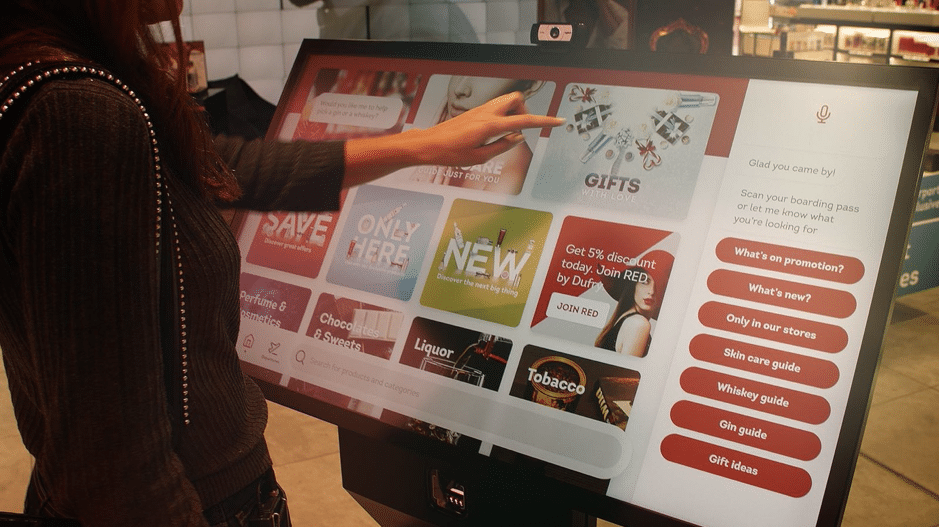
Applying digital to physical
The application of mobile apps and physical retail guiding technologies can help consumers navigate their options and decide which solution suits their needs. Technologies such as Ombori Grid are already helping service providers and retail stores easily leverage omnichannel retail, visitor management and customer experience data to personalise product recommendations and in-store services.
The Ombori Grid solution delivers streamlined deployment and management of integrated apps and experience management tools via the Microsoft Azure Marketplace, an online repository providing access to a wide range of applications and services for use on the popular Azure Cloud platform.
The Azure marketplace delivers instant access to Ombori’s powerful ready-to-use range of no-code apps such as Appointment Booking, Queue Management, Occupancy Control, and the Digital Signage Playlist. These can be deployed quickly and easily without the need for costly and time-consuming custom development.
The powerful Ombori Grid range of solutions gives retailers and service providers the ability to deploy quickly, test and manage a range of in-store experience technologies that will empower customers and staff alike.
Users can interact with Ombori’s Grid apps via Web, mobile, voice, touchscreen, or gesture, among other options. All the apps can include an interactive digital kiosk solution, enabling consumers to easily access product information such as in-store location (wayfinding) and requesting a product solutions expert for a demo. Additionally, the apps easily connect to many IoT devices, such as cameras, sensors, smart speakers, mobile phones and even customer smartwatches.
Ombori Grid apps can also share data with retailers and existing data sources such as websites, inventory management, or customer databases – making the apps a gold mine for behavioural data capture and analysis. Combining apps and devices in innovative ways allows business owners to create unique experiences and identify bottlenecks in customer journeys.
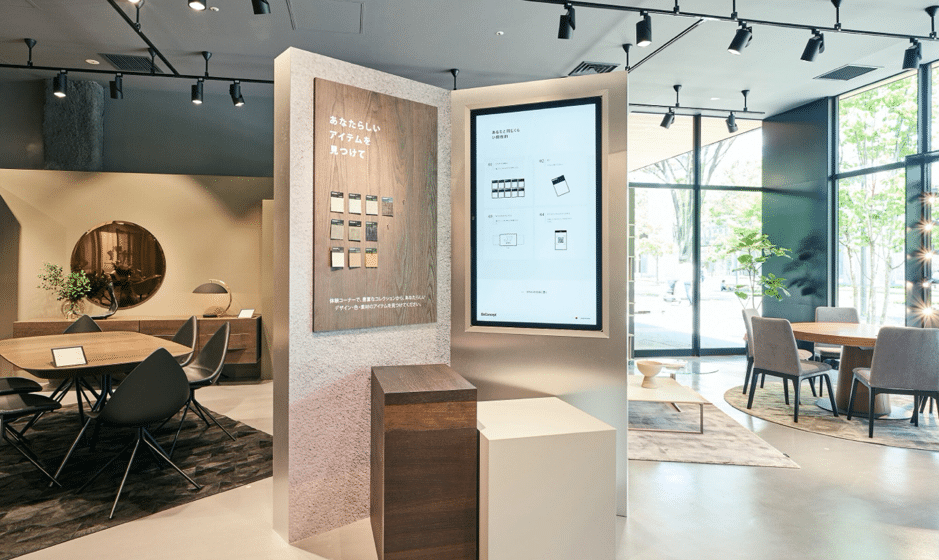
A high-quality experience outcome
The benefits of experience apps and physical technologies are clear for those committed to high-quality customer engagement. Ombori Grid offers a speedy, flexible, and affordable way for business owners to gain the advantages of these technologies. It rapidly delivers increased customer engagement, loyalty, footfall, revenue, and productivity. Ombori Grid also includes developer tools to allow you to create your Grid apps.
Ombori Grid is a Microsoft Preferred solution currently deployed worldwide, offering reliability at any scale. It can handle tens of thousands of devices across thousands of locations and supports multiple languages.
To take advantage of Ombori’s Grid solutions, contact us and we can help you set up a free account and select the apps you need via the Microsoft Azure Marketplace. In addition, we will add a free consumption voucher worth 100 Euros* to your account.
You can add or remove apps on-demand, only being billed for what you use. You can configure and customise your apps from the Grid console to meet your specific needs and branding – and you can also deploy your apps directly to wherever they’re needed, across multiple locations. If the hardware is already in place, you can be up and running within minutes.
Request a demonstration
Working in partnership with Tech Data we are helping organisations take advantage of the technology.
Channel Partnerships can set up a meaningful and tailored demonstration that will show the Ombori solution working for a real-world evaluation.
Contact Channel Partnerships directly by calling: 01923 618099
Or email: info@channel-tools.biz
https://channel-partnerships.com
*subject to a qualifying conversation.
Latest articles
March 21, 2024
Channel Tools Announces Strategic Partnership with mpro5 to Enhance Operational Efficiency and Innovation
mpro5 allows customers to quantifiably improve operational efficiencies through cost savings,…
March 8, 2024
Unlock the Power of Intelligent Search with IntraFind
Embrace the power of intelligent search with IntraFind and unlock new possibilities for your…
February 2, 2024
Unlocking Retail Success with EVERYANGLE’s Aurora: The Ultimate Retail Analytics Suite
Unlock the full potential of your retail operations and embark on your journey towards sustainable…
Join our Partnership Program
There are many benefits partnering with us. Simply complete the form at the bottom of this page to discuss how the program can sky-rocket your visibility in any technology market place. We have huge experience in the creation of new channels – and we can create introductions, leads and business opportunities for your sales teams.
Want to know how a Channel Partnership could benefit your business?
Complete the form below and one of our team will call you back:
Getting to grips with modern data management
Getting to grips with modern data management
How organisations are now taking control of their exploding data growth while cutting 70% of enterprise storage, backup, and cloud costs.

By Kewal Gupta
28th January 2022
Until recently, enterprise data storage mainly consisted of disk-based systems for immediate availability and tape for offline backup. Rarely used data could be stored on lower tiers of disc (often spinning HDD’s) to save cost – but this demanded layers of redundancy and RAID solutions to guarantee access to that rarely/little-used data. With in-house disk-based storage systems employing layers of solid-state architecture, tiers of spinning disks and complex management software, many organisations faced eye-watering (and ever-increasing) data storage costs.
At the mercy of increasingly sprawling storage systems, IT managers and their teams found they had dwindling insight into the nature and use of data under management. Ultimately, many groups were compelled to treat all data similarly, no matter if it was business-critical, temporary, or legacy. Anything else was too risky.
Exploding data growth
Today, this loose approach to data storage can no longer be tolerated. Organisations are facing explosive growth in unstructured and structured data from all sides – and they are increasingly expanding the number of silos and classes under management. Many organisations are employing a mix of private cloud object storage, public cloud file and object storage, and disk-based solutions. Additionally, most teams are actively using a hybrid cloud architecture to provide them with all the features of native cloud solutions.
Naturally, the more significant vendors have created intelligent storage management software solutions that can dynamically control data orchestration on storage classes. However, these storage management systems lack the intelligence and flexibility many organisations demand. Often, the software will lead the customer into a vendor lock-in situation or fail to deal comprehensively with hybrid cloud architectures. This situation can lead to even more complexity for the customer’s data storage team – with increasingly complex software layers. Worse still, customers face software customisations to deal with outlying data management use cases.
The case for independent data management
Today, many organisations are turning to independent data management solutions that can help them by automatically analysing, understanding, and moving data to the most appropriate tier – no matter if the storage is a mix of vendor technologies or cloud-based systems.
These solutions are described as Data Management rather than Storage Management. They orchestrate your data across all storage classes – and they intelligently choose the most appropriate storage system for each piece of data.
Modern Data Management Solutions such as those offered by Komprise enable data to move in the background without changing the availability or access to that data for users, applications, and systems. Additionally, the technology allows the data to be directly accessible within the cloud – without requiring access through the original file structure. This approach speeds data access and frees it from proprietary storage technology – while giving access to the full compute power and elasticity of the cloud alongside native services and applications.
Freedom to access data independent of its storage silo
The Komprise solution also gives organisations transparent access to tiering that teams can control with user-defined policies. It allows ‘cold’ data to be automatically moved to cheaper or slower storage – while ‘hot’ data is retained in faster storage for rapid access.
All of this smart data management means that users and applications alike see no change in the file structure. Their data is right where they expect it to be – yet the organisation saves considerable resources by leveraging the most efficient storage architectures.
The Komprise solution manages to move data, leaving behind an industry-standard symbolic link that is dynamic and resilient. These links appear the same as the original data file and retain the same permissions and attributes. Users and applications can open and access the moved files from their original location precisely as before, without any changes.
Data back-ups are minimised as the Komprise system retains only the ‘hot’ or essential data on your primary storage – dramatically shrinking the data footprint.
Access to cloud data without additional complexity
Unlike data virtualisation, storage tiering or global file storage gateways, the Komprise solution doesn’t move data in a proprietary format, and it will not get in front of hot data. This unique approach frees organisations from expensive licensing requirements for cloud access, allows cloud-native data analytics tools – and speeds up the delivery of hot data.
How Pfizer saved 75 per cent on storage and cloud migration costs
One organisation that deployed the Komprise solution with significant effect is leading pharmaceutical company Pfizer, which operates a global heterogeneous NAS environment.
The Pfizer system had 5 petabytes of cold and unstructured data alone, of which 64 per cent had not been accessed in over two years. Pfizer’s team needed to move the data while maintaining visibility, an ongoing strategy for applying business rules for analytics, and better insight into the data it was hosting.
“What sets Komprise apart compared with other solutions is the end-to-end process of analysing and moving data,” said Caitlyn Possehl, Global Strategic Alliance Leader at Komprise. “You can use Komprise to scan all your data, analyse costs and create business rules and then Komprise will act automatically against those rules.”
Pfizer saved over 75 per cent on storage and cloud migration costs with the Komprise solution. Cost savings came from removing manual data management and having Komprise intelligently and automatically move cold data from high-priced, on-premises storage to more cost-effective storage on Amazon S3. Pfizer can still directly access the data in AWS as S3 objects natively without lock-in or fees. Read the full case study here.
Learn more about the Komprise solution
Komprise is a cloud data management-as-a-service that frees you to quickly analyse, mobilise, and access the correct file and object data across clouds without shackling it to any vendor.
In the UK, Komprise is working in partnership with Tech Data to help organisations evaluate the technology.
Channel Partnerships can set up a meaningful and tailored demonstration that will show the Komprise solution working for a real-world evaluation.
Contact Channel Partnerships directly by calling: 01923 618099
Or email: info@channel-tools.biz
Latest articles
March 21, 2024
Channel Tools Announces Strategic Partnership with mpro5 to Enhance Operational Efficiency and Innovation
mpro5 allows customers to quantifiably improve operational efficiencies through cost savings,…
March 8, 2024
Unlock the Power of Intelligent Search with IntraFind
Embrace the power of intelligent search with IntraFind and unlock new possibilities for your…
February 2, 2024
Unlocking Retail Success with EVERYANGLE’s Aurora: The Ultimate Retail Analytics Suite
Unlock the full potential of your retail operations and embark on your journey towards sustainable…
Join our Partnership Program
There are many benefits partnering with us. Simply complete the form at the bottom of this page to discuss how the program can sky-rocket your visibility in any technology market place. We have huge experience in the creation of new channels – and we can create introductions, leads and business opportunities for your sales teams.
Want to know how a Channel Partnership could benefit your business?
Complete the form below and one of our team will call you back:
Understanding nuanced meaning in legal documents
Understanding nuanced meaning in legal documents
How AI is revolutionising the granular analysis and comparison of meaning within contracts and complex documents.

By Kewal Gupta
14th January 2022
Why is semantics important?
Semantics is described as the root meaning of text within any given document or speech. A complex document such as a contract will be open to misinterpretation where the meaning could be obfuscated within layers of overlapping clauses.
For any layperson attempting to appreciate a contract’s content fully, a specialist or lawyer will be essential to decipher meaning at every level. Once meaning has been identified, applying a viewpoint to that meaning can also be open to misinterpretation.
The role of semantics in the legal profession
When presented with a legal contract, most of us will read and re-read each clause to understand the ‘meaning’ behind the text. Often described as ‘legalese’, contractual clauses can seem overly complex to the layman, consisting of overriding sentences that frame the clause and define boundaries within which the contractually obligated parties can operate.
Whenever a contract is created or amended, all relevant parties should evaluate the text – often at a granular level – to fully understand the document’s implications. This evaluation can take a lot of time and expense for lawyers or your legal specialists.
Although many firms will have qualified professionals supporting their people with analysis, comparison, and investigation services, they can often miss the ‘meaning’ behind a phrase. This meaning and how it relates to the client are at stake. Usually, only the client can interpret the true essence within a contractual term – but only if they have the facts (and meanings) clearly laid out in front of them, and this can take a considerable amount of time, cost and effort.
How automation has attempted to improve contract analysis
Since the early 1980s, firms have attempted to introduce automation to detect and understand the meanings within contract documents. These systems mainly use rules-based workflows alongside large libraries to identify and alert users to pre-defined issues within documents. These systems can be cumbersome and complex, demanding constant updates and manual intervention to guarantee any measure of success. Additionally, these systems often fail when multiple languages and regional variations in law are applied.
However, the need for a solution to the problem of document analysis and semantic recognition continues to grow.
The considerable volume of documents created in the legal domain demands more sophisticated tools supporting efficient and intelligent information gathering. Document research and management systems are now using strategies based on machine learning to classify, filter and extract context-based content. These systems help users identify relevant structured portions of legal text semi-automatically – such as contract clauses.
However, while knowledge management systems can deliver automated detection of matching text sections, they often fail to identify meaning – or the change of purpose.
From Machine Learning to AI – the solution to rapid semantic text analysis
The application of artificial intelligence (AI) to the problem of identifying and comparing semantic meaning has, at last, started to gain ground. Companies such as ThingsTHINKING from Karlsruhe have developed technologies over the previous 14 years that can already identify and compare semantic meanings within complex legal documentation.
The Semantha platform from ThingsTHINKING delivers fully automated semantic processing for legal, contractual, and complex documents. It can be applied to many use cases such as CV matching, NDA analysis, contract review, contract renewals, international contract translation and more.
The team at ThingsTHINKING describe their Semantha platform as ideal in situations where there is “too much text and not enough time”, – which sums up the situation most lawyers and legal teams find themselves in every day.
The Semantha interface allows users to upload multiple documents (such as contracts) to an interface for analysis. These documents can be in different formats (Word or PDF) and various languages. The user can then run a comparison or search against the records to find and identify matching sections of text that imply similar (or the same) meaning.
During a recent webinar by the Semantha team with automation integrations specialists UiPath, a search was conducted for the phrase “All genders have equal rights and obligations” across a selection of constitutions from countries such as Canada, India, China, Mexico, the USA and Europe. Semantha instantly identified clauses within each constitution that matched the same meaning – irrespective of language.
The Semantha platform can easily compare the matching phrases for similarity matches with adjustable thresholds. It makes these comparisons and identifies matches in semantic meaning despite different wording and terms in each document.
Perhaps just as importantly, the Semantha platform quickly identifies if a close match is not available between documents – helping users to discover if an expected intention in meaning is missing from within a document.
ThingsTHINKING is packaging the Semantha platform for firms to apply to their internal systems either as a stand-alone tool – or as an integration to other document management solutions using their extensive API. Semantha works ‘out of the box’ with learning required, thanks to the AI engine behind the solution.
Identifying meaning vs application of viewpoint
Although the Semantha platform can quickly identify the presence of an expected item of text with specific meaning, this is not enough for most organisations. We might already know that a phrase or clause is essential – and it is significant that the platform identifies the presence of this phrase – but what about a client’s specific viewpoint of that phrase? For example, a clause specified within a contract may stipulate a penalty. Our client might believe that this penalty is unacceptable – and we need the AI to help us identify and highlight the inclusion of this unacceptable condition. In this case, the user can tell Semantha via a simple interface that a particular phrase is ‘Bad’. In addition, the user can apply a ‘Good’ phrase – so anytime Semantha finds an item of text similar to the ‘Bad’ phrase, it will suggest or use the ‘Good’ alternative.
By applying your alternative phrases to a document, the Semantha platform will learn the user’s viewpoint and apply these learnings to any records available to the platform.
Semantic analysis automation in document management
Working with automation tools such as UiPath, users can integrate the Semantha platform to their document libraries such as SharePoint and any gateways where documents are arriving at the organisation (such as email). Semantha can automatically scan incoming documents looking for semantic meanings that it knows to highlight – triggering an alert and actions that the user can easily manage.
Users can decide on the level of integration they want within their document management workflows – and they can maintain human intervention where specialists need to evaluate semantic changes in contracts. As they become more confident in the accuracy of the Semantha platform, they can rely increasingly on automation and AI to deliver accurate results far more quickly.
Getting Semantha on board
For anyone dealing with many legal documents such as contract renewals, having a system like Semantha onboard could save the organisation many hundreds of hours in analysis. Although Semantha is easy to install and test within your environment, a demonstration is recommended to appreciate the platform’s advantages and features.
Channel Partnerships, working in partnership with Tech Data is here to help organisations evaluate the technology.
Channel Partnerships can set up a meaningful and tailored demonstration that will show the Semantha platform working to provide you a real-world evaluation.
Contact Channel Partnerships directly by calling: 01923 618099
Or, email: info@channel-tools.biz
Latest articles
March 21, 2024
Channel Tools Announces Strategic Partnership with mpro5 to Enhance Operational Efficiency and Innovation
mpro5 allows customers to quantifiably improve operational efficiencies through cost savings,…
March 8, 2024
Unlock the Power of Intelligent Search with IntraFind
Embrace the power of intelligent search with IntraFind and unlock new possibilities for your…
February 2, 2024
Unlocking Retail Success with EVERYANGLE’s Aurora: The Ultimate Retail Analytics Suite
Unlock the full potential of your retail operations and embark on your journey towards sustainable…
Join our Partnership Program
There are many benefits partnering with us. Simply complete the form at the bottom of this page to discuss how the program can sky-rocket your visibility in any technology market place. We have huge experience in the creation of new channels – and we can create introductions, leads and business opportunities for your sales teams.
Want to know how a Channel Partnership could benefit your business?
Complete the form below and one of our team will call you back:
Asset Tracking has come of age
Asset Tracking has come of age
How asset tracking will be used in 2022, and how modern wireless IoT tracking technologies compare.

By Kewal Gupta
17th December 2021
Asset tracking in 2022 will deliver so much more than simply knowing the location of resources and materials. Real-Time Location Systems (RTLS) already use a wide range of IoT devices and platforms to deliver intelligent asset insights across almost every vertical and market sector.
Businesses of every scale are recognising that asset tracking solutions can help them with their automation and business transformational goals, resulting in improved efficiency and productivity.
Asset tracking solutions are already providing invaluable insights into process efficiency when applied to resources, machinery, equipment, materials, and products.
Vehicle tracking is perhaps the most mature asset tracking use case that many will be familiar with. Telematics and vehicle tracking has also experienced a revolution in recent years with increased accuracy, greater resilience and larger data packets being broadcast. Businesses like Microgenie use GPRS enabled devices to allow full scale fleet tracking and telematics solutions. Sophisticated algorithms supporting OTA configuration of independent frequencies for geo-location and data upload, while in motion or static. Solutions are GPS enabled for outdoor precise geo-location, with the ability to fall back to GSM cell ID positioning when GPS is not available.
In general, IoT asset tracking platforms are being deployed at increasing scale across manufacturing, warehousing, transport, retail, hospitality, healthcare, military, and many other sectors to gain insights into asset status. Data from these platforms is being sent back into workflows to deliver improved processes and cost savings.
New systems are also helping to bring multiple asset tracking devices and their technologies under the control of a single platform, so business owners can more easily monitor a wide range of assets and resources. Platforms such as the IoT MicroGenie help businesses monitor and control almost every IoT tracking device from security systems and lighting to condition monitoring. It does this by acting as an IoT Hub, taking control of IoT devices and allowing users to gain actionable insight, management and control over their entire estate.
Now, Channel Partnerships in collaboration with Tech Data is helping organisations at every scale take full advantage of the latest innovations in asset tracking and IoT. The partnership brings together the leading platform and device manufacturers to help organisations solve their workflow challenges – from sophisticated telematics solutions to asset wayfinding and social distancing.
The benefits of asset tracking in 2022
These are among the first, and perhaps most valuable, effects of being able to monitor asset location and react in real-time. Asset tracking can make an instant impact on:
Inventory management
Business owners can know exactly how many pieces of inventory they have in stock, where they are and their condition in real-time.
Equipment maintenance
Organisations can arrange equipment maintenance schedules based on use (often measured in distance, time, and performance history) rather than via calendar dates.
Purchasing decisions
Accurate stock levels can be reported to help managers avoid over purchasing. Equally, a business can more accurately estimate stock purchasing requirements when inventory data is aligned to real-time stock levels, equipment availability and usage rates.
Compliance
Asset tracking platforms can automatically deliver historical data to help document compliance against applicable regulations.
Safety and security
Asset tracking deployments can be augmented with geofencing capabilities to limit or control access to sensitive or hazardous areas and materials.
Loss prevention
Geofencing settings applied to assets can alert managers when valuable assets move outside a predefined area. Additionally, workers can more easily locate an item of machinery or equipment within a large workspace or estate.
Customer experience
Accurate asset tracking can improve order picking, shipment processing and delivery timeframes – resulting in fewer customer issues, returns and cancellations.
Industry examples of asset tracking
Asset tracking platforms are increasingly being deployed to help organisations improve efficiency and productivity. Essentially, by tracking assets with greater accuracy and by leveraging greater insights into the condition of those assets, organisations can greatly improve performance.
The growth in asset tracking IoT devices and their related platforms and technologies is driving a revolution in organisational improvements, thanks to the ability to accurately track the flow of materials and people within an environment.
Here are some examples of how modern asset tracking and IoT platforms are changing the face of business today:
Supply chain management
Sensors with temperature-reading capability can document those goods in transit are always kept in optimum conditions. Additionally, asset tracking can support the chain of custody and avoid costly claims alongside accurate compliance reporting.
Manufacturing & Warehousing
The real-time reporting of assets within a process can identify potential bottlenecks and optimise the movement of goods and materials – as well as people and resources.
Accurate reporting of asset positions within a warehouse (including height) can help improve picking. Additionally, measurement of dwell times can streamline order processing and improve operational efficiency.
Healthcare
Asset tracking across a hospital estate makes medical equipment easier to locate, streamlining wait times and avoiding critical situations where essential equipment cannot be located.
Wireless asset tracking technologies compared
There are several location-tracking and communications technologies that can be applied to asset tracking sensors. Beacons and tags need to be compatible with your chosen platform’s digital standards, but in 2022 these are increasingly becoming agnostic – many platforms can accommodate devices that use almost any of the available technologies.
Each communication technology has its strengths and weaknesses, so potential buyers need to be aware of the various features and where each is best applied. Often it is best to gain the advice of your platform provider. A consultancy-led approach will provide you with more insights and recommendations – but the following outline might help when entering a discussion about the various options:
RFID for asset tracking
Radio-Frequency Identification, or RFID, uses radio waves to broadcast and detect an asset’s location. There are two main types of RFID – Active and Passive.
Passive RFID is not typically used for asset location purposes since devices using it are not equipped to broadcast their location.
Active RFID tags have their own power supply and can broadcast a signal. The assets’ location is calculated by measuring the signal strength as the tag moves around an environment.
Strengths of RFID in asset tracking
With RFID, no line-of-sight (LOS) is needed, and RFID signals are multidirectional. RFID delivers a signal that is robust, stable and resistant to interference. Additionally, RFID signals are easily picked up by readers and sensors.
RFID chips are usually compact and can be integrated with almost anything, making them ideal for discreet applications and portability.
Weaknesses of RFID in asset tracking
RFID signals are easily intercepted with an RFID reader, making them unsuitable for applications that demand data security and privacy compliance.
RFID is also an older platform with poor standardisation – making it more complex to integrate into existing platforms.
Ideal use cases for RFID in asset tracking
- Demanding environments and harsh conditions
- Discreet application and smaller items
- Standard asset tracking applications involving inventory, warehousing, shipping, etc.
- Simple access control solutions
Bluetooth Low Energy (BLE) for asset tracking
Bluetooth Low Energy (BLE) has quickly become one of the more popular communication technologies in asset tracking. BLE offers a wide range of features, and its growing popularity has ensured a vast ecosystem of devices and platforms that support it. BLE offers low energy use, interoperability, and stability.
Like RFID, BLE establishes the location of an asset by measuring signal strength – however, it can also geolocate based on the proximity of other BLE sensors within an array. Indeed, the accuracy of location data is improved by having more devices within a single environment.
The extremely low power consumption of BLE devices means that batteries in beacons and tags can last for five years or more, depending on the settings used. BLE also functions extremely well in both indoor and outdoor environments.
BLE has been adopted by the IoT asset tracking industry as a firm favourite, and as such it has been standardised to work with mobile devices including phones, tablets, and computers along with other consumer and industrial goods.
A major reason for its attractiveness as a platform for asset tracking is the enormous global penetration of BLE as a standard across a huge range of devices. Its ability to interact with phones, tablets and computers automatically creates an enormous network that BLE can leverage.
Strengths of BLE in asset tracking
Since BLE is already installed within millions of consumer devices, it can be used by anyone with a modern smartphone or tablet that has a suitable application installed. There is no need to buy additional hardware, which makes the cost of BLE significantly lower than RFID.
BLE can be adopted for use with sensors to report temperature, motion, vibration, impact, humidity, and more alongside its native location and positioning technology. It can be easily integrated with other technologies and cloud services – and easily deployed for simple use cases that can expand in the future as business needs to grow.
Weaknesses of BLE in asset tracking
Scaling BLE and preserving accuracy requires adding transmitters to create a denser network, which can be expensive in large deployments.
Ideal use cases for BLE
- Anything that demands tracking and location data such as wayfinding and navigation.
- Mapping workflows and asset movements through a business process
- Asset location in larger environments such as hospitals, schools, campuses, and airports.
- Temperature-sensitive asset tracking, such as cold-chain food processing
- Geo-fencing and security situations that require assets to remain inside or away from certain environments.
Ultra-Wide Band (UWB) for asset tracking
Ultra-Wide Band (UWB) offers extreme energy efficiency in IoT devices – beyond that of BLE. Its super efficiency is achieved by transmitting very short signal bursts on demand, instead of constantly or more regularly. With some signal bursts lasting a millionth of a second, power usage is minimal.
The wide spectrum of the UWB signal is strong and can carry very large amounts of data in short bursts. The signal can also more easily penetrate obstacles, such as walls and ceilings. The “low power spectral density” of a UWB signal will not interfere with other signals in the same frequency spectrum – so, devices can be tracked in very close proximity to each other.
Furthermore, the short burst nature of UWB transmissions makes it much easier to encrypt from both the transmitting asset and the receiving platform.
An interesting use case is the UWB enabled Social Distancing Tag from Alis Tech. This tag will alert employees if they come within close proximity of each other. The wrist tags can alert the user with vibration and flashing options, while adjustments to the distance measured can be updated easily.
Strengths of UWB in asset tracking
UWB offers highly accurate positioning because of its wide spectrum signal and the burst power of transmission. Despite the very low power consumption, the size of the data packets means that more accurate location and position data can be transmitted, down to 10cm.
Additionally, because the data packets can be much larger, adding encryption to your data is much easier. Data privacy, compliance and security are much easier to manage with UWB.
Finally, UWB offers reliable data transmission with almost zero interface – so the risk of packet loss, signal collision and corruption are minimised even within very crowded environments where multiple assets need to be tracked and monitored.
Weaknesses of UWB in asset tracking
Until recently there have been fewer UWB based IoT tracking platform options for buyers to choose from, and the costs of deployment were high. More recently UWB has seen a growth in popularity and support is gaining, however, it is still less adopted across tracking platforms than BLE.
Ideal use cases for UWB
- Environments that demand very low energy consumption
- Cases where data privacy, compliance and security are a priority
- Environments where multiple wireless platforms and other devices are already deployed
- Where ultra-precise location information is needed
- Cases that demand transmission of larger data packets
- Can be used for vehicle tracking and may be suitable for autonomous vehicles in the future (UWB-Based Tracking of Autonomous Vehicles with Multiple Receivers)
NBIoT for asset tracking
Unlike UWB, Narrow Band Internet of Things (NBIoT) operates across a very small part of the wireless spectrum – but broadcasts in multiple frequencies simultaneously. Like UWB however, it uses very little power because it does not broadcast its signal continuously or even very often.
NBIoT is designed to handle many small transmissions sent infrequently. The lack of a constant signal makes it a poor choice for real-time tracking updates on things that are in constant motion. However, NBIoT is aimed primarily at broadcasting status updates and infrequent two-way communications.
NBIoT is compatible with existing cellular networks and as such it offers unique scalability and accessibility for those users that demand huge coverage. Designed to be able to handle massive amounts of small individual connections, NBIoT is positioned to sweep up a new generation of connected devices and smart accessories in the coming years.
Strengths of NBIoT in asset tracking
NBIoT offers ultra-low power consumption. It is also capable of handling very large amounts of connections at once, making it ideal for IoT devices. Additionally, because NBIoT leverages existing cellular networks it will be much easier to grow a widely dispersed platform of connected devices.
Weaknesses of NBIoT in asset tracking
Like UWB, NBIoT is not ideal for any asset tracking that involves constantly moving or highly mobile devices (such as vehicle tracking). Additionally, NBIoT offers a very limited data packet size, so use cases can be limited.
Ideal use cases for NBIoT
- Updates from IoT-connected accessories and devices
- Tracking across very large areas, even country scale
- Periodically taking measurements from many locations, such as meter readings or occasional status reports
SUMMARY
Beacons, tags, and other sensors form the backbone of asset tracking platforms, and these devices are often empowered by different location-tracking technologies. Each platform approaches the challenge differently, but they are all focused on digitally tracking resources and materials in an environment. Many platform manufacturers are now providing hardware agnostic deployments, meaning sensors are compatible with multiple digital standards.
Several technologies are available for the purposes of asset tracking, each with its strengths and weaknesses. Those attributes make them suited for particular use cases in different industries. Since they function in different ways and achieve essentially the same result by taking different technical paths, the small differences between them can make them ideal for one context and a poor choice for another.
The range of choices and standards can be confusing, especially since there is so much crossover between them. However, organisations such as Channel Partnerships are here to help you navigate the sea of device and platform options. We can help you source the best solution for your future needs – without over specifying or adding unnecessary complexity.
Contact the team at Channel Partnerships today to get further insight into IoT and asset tracking solutions that can improve your organisational productivity.
Latest articles
March 21, 2024
Channel Tools Announces Strategic Partnership with mpro5 to Enhance Operational Efficiency and Innovation
mpro5 allows customers to quantifiably improve operational efficiencies through cost savings,…
March 8, 2024
Unlock the Power of Intelligent Search with IntraFind
Embrace the power of intelligent search with IntraFind and unlock new possibilities for your…
February 2, 2024
Unlocking Retail Success with EVERYANGLE’s Aurora: The Ultimate Retail Analytics Suite
Unlock the full potential of your retail operations and embark on your journey towards sustainable…
Join our Partnership Program
There are many benefits partnering with us. Simply complete the form at the bottom of this page to discuss how the program can sky-rocket your visibility in any technology market place. We have huge experience in the creation of new channels – and we can create introductions, leads and business opportunities for your sales teams.
Want to know how a Channel Partnership could benefit your business?
Complete the form below and one of our team will call you back:
Technologies to watch in healthcare in 2022
Technologies to Watch in Healthcare in 2022

By Kewal Gupta
7th December 2021
We evaluate three cutting edge technologies that help healthcare organisations remain agile and safe.
In the wake of the pandemic, almost every organisation has had to accommodate operational adjustments. This is particularly evident in the health sector where medical practitioners and technology solutions have become even more key to ensuring patient safety whilst maintaining ongoing care services.
By aggregating data, providers can identify trends, enabling them to better predict patient behaviours and organisational needs.
In intensive care situations, systems can combine data across multiple devices that aren’t connected, creating an impressively complete picture of that patient for their clinician. And all that data collected? It can be captured, stored, and analysed to drive better predictions in the future.

Telehealth – the digital communication solution for healthcare
One obvious solution that has revolutionised the delivery of health services in the last two years is Telehealth. These systems are delivering medical care, provider and patient education, health information services, and self-care solutions via a huge range of digital communication technologies.
Telehealth and Telemedicine
The terms telehealth and telemedicine are often used in the same context. Telehealth includes a wide range of technology-driven healthcare activities and services, while telemedicine is essentially the remote diagnosis and treatment of patients via technology.
An example of telemedicine might include a diagnostic service located in another country or time zone to maintain 24-hour radiology capabilities.
Telehealth on the other hand includes every part of the healthcare system that can be conducted through digital communications technology, including:
- Scheduling and delivering remote GP appointments
- Triaging patients remotely before they enter a care facility
- Remotely monitoring patient vital signs, so the patient can remain at home
- Analysing and acting on real-time patient data from a remote location
- Providing advanced medical support to teams in remote locations.
Real-time patient data, available anywhere
Telehealth solutions have quickly expanded beyond phone calls, and video consultations. Provider solutions now include portals and remote monitoring systems to deliver more complex guided workflows for both patients and clinicians.
One such provider is WiCis Health, a platform that uses cloud-based workflows, video-conferencing, and live vital signs to deliver real-time patient care.
WiCis Health is a mobile-first HIPAA compliant Telehealth and Telemedicine system that delivers advanced medical care remotely and to the point of need.
The solution allows doctors to see patients and monitor their vital signs remotely – whether they are in the same building or a completely different country. Customisable data analytics dashboards allow clinical care staff to follow guided workflows and monitor the progress of patients. Essential data can be gathered via wearable technologies that stream real-time information to and from the platform.
Deployable within 48 hours, the WiCis Health platform can scale to support thousands of patients.
Increasing use of Telehealth technologies
Telehealth technologies such as the WiCis Health platform are being deployed via mobile health apps (mHealth), video and audio technologies, digital imaging, remote patient monitoring (RPM), and store and forward technologies.
The rapid adoption of telehealth has greatly helped to expand access to healthcare at a time when traditional in-person visits have had to be avoided due to the significantly increased risk to patients, healthcare providers and communities. According to a May 2020 McKinsey report, at least 20% of all health spending could easily become virtual via Telehealth solutions in the near future.
See the WiCis Health Telehealth Platform in action
To learn more about WiCis Health, contact the team at Channel Partnerships to discuss your needs. We will help to set up a meaningful demonstration of the solution and a follow up with an experienced telehealth solutions expert.

IoT and IoMT Asset Security Solutions for Healthcare
According to a recent study, ransomware attacks on healthcare organisations are having life-and-death consequences. Until now, ransomware has typically been discussed in terms of lost revenue or operational impacts – but for the first-time mortality as a direct result of cyber threats is taking centre stage.
Currently, healthcare providers around the world are under siege from ransomware attacks. To date, 67% of healthcare providers surveyed said that they had been victims of ransomware attacks, while 33% have been hit twice or more.
What’s more, the root cause of the related data breaches was equally liable to be due to an insecure medical system or IoT device.
While medical facilities and hospitals are likely to have active firewalls and anti-phishing solutions in place, IoT protection often fails to gain the attention of over-worked IT staff and security managers.
Most IoT and IoMT (Internet of Medical Things) devices cannot be updated or patched in the same way that a computer can. Many devices run the operating systems and firmware that they originally shipped with. As these devices inevitably increase the attack surface, cybercriminals will take advantage by directly targeting these unguarded entry points.
How hospitals can extend threat detection and responses to connected medical devices
Now for the first time, there are solutions, in the form of a new breed of IoT Attack Detection and Response systems created solely for connected healthcare devices. These solutions give hospitals the power to identify, contain and mitigate threats on IoT and IoMT devices – directly protecting the health, safety, and lives of connected patients.
Hospitals now have the immediate ability to identify and quarantine any device demonstrating malicious or suspicious behaviour. Once the device has been identified and isolated it can be given full remediation and recovery solutions.
One such solution is the Healthcare Attack Detection and Response solution from Cynerio.
Key features of Cynerio’s IoT Attack Detection and Response for Healthcare include:
IoT Attack Alerts
The system alerts hospital IT managers to device behavioural anomalies, complemented by attack detection data from other implementations, machine learning and dozens of vulnerabilities and threat intelligence feeds collected from global sources.
IoT Attack Containment
Any attack observed on a device can be immediately quarantined to give IT Managers a secure way to further remediate the incident without impacting service availability or patient care.
IoT Attack Investigation
Collect detailed forensics on all IoT devices along with the connections between them – and investigate device metadata using deep packet inspections. This forensic data can then be ingested by your Security Incident and Event Management (SIEM) platform to enrich any attack investigation you are carrying out across your IT infrastructure.
IoT Attack Response
The system shares its intelligence on any threats with other IT security solutions that hospitals are using – such as threat detection and isolation tools. IT Managers can actively prevent device exploitation with micro-segmentation that safely limits device communication to the bare minimum so that attacker reconnaissance, lateral movement and ransomware shutdown of devices is blocked.
The Cynerio system also provides real-time help from support agents alongside reporting on PHI exfiltration, risk exposure over time, and step-by-step instructions broken down by device and attack.
See the IoT Attack Detection and Response for Healthcare system from Cynerio in action
To learn more about Cynerio, contact the team at Channel Partnerships to discuss your needs in the first instance. We can help you identify the solution capabilities that are most relevant to your needs and arrange a tailored demonstration. We can then provide a full proposal that is customised for your healthcare environment.

Managing unstructured data explosion in healthcare
Medical images and data files contain untold value for healthcare organisations, yet they are rapidly exceeding the limits of their own data centres.
Hospitals have shifted to digital media for medical imaging. Digital PACS, digital pathology and other systems are all generating and storing petabytes of medical imaging data. This ever-expanding data is pushing the limits of on-premises and cloud storage costs. It is also challenging the ability to manage the availability of clinical data to medical staff.
To make matters worse, healthcare providers typically must retain medical imaging files for several years; they may even have an enterprise-wide policy of retaining medical data forever, because clinical researchers may need access to the data indefinitely.
The cost of managing all this data is growing exponentially.
Keeping data is expensive for hospitals because they must pay not only for the primary storage but also for backups and replication of the images for DR.
IT managers and storage teams are attempting to use cold data tiering to the cloud. However, tiering options from storage vendors are often not viable because of costs, limitations on how much data can be tiered, and egress costs on data access.
Additionally, cloud gateway solutions can create a new data silo – and as such any archived files might not be accessible to clinicians from their original locations.
Intelligent data management for healthcare
New data management solutions for healthcare providers can now deliver tiered data storage with immediate access capabilities for medical images not used for 90 days or more. Unused data can now be transparently tiered to cloud-based object storage.
Moving to durable object storage eliminates the requirement for backups since the service automatically stores two or more copies of the data. Researchers, pathologists, and technicians can now continue accessing the tiered images exactly as before.
With intelligent data management solutions, Digital Pathology, PACS, VNA and other applications can continue to work as before without requiring any special integrations or changes to their workflows. Data is moved transparently and in real-time behind the scenes – making sure that any data is delivered seamlessly from cold storage.
Data management cuts cost significantly by transparently tiering from network-attached storage to cloud
There are many choices today for data management solutions, but healthcare providers need solutions that work seamlessly with their existing storage systems and imaging applications. They also need solutions that eliminate vendor lock-in so they can access data and move it to different vendor platforms without causing higher costs or onerous processes.
In the case of healthcare, data management solutions must integrate effortlessly with digital imaging application workflows to automatically move older images from NAS to resilient object storage in the cloud-based on policies.
The leading solution is the Unstructured Medical Data Management system from Komprise.
With the Komprise solution, user experience and workflows remain unchanged. Clinicians, technicians, and other healthcare staff don’t have to change how they search and access files. There is no re-training required and there is zero disruption to their existing workflows. Data is automatically tiered to more affordable cloud storage transparently, without changing where or how clinical staff access that data.
Komprise also ensures continued interoperability with any medical imaging application without any proprietary interfaces or changes. This frees IT managers to add data management to their existing infrastructure without disruption.
The Komprise solution eliminates cold data – such as unused images – not just from local storage but also from backups and DR. The smart solution offloads the entire image file from local storage to durable tiered cloud storage – proportionately shrinking the backup and DR footprint.
The Komprise solution also enables cloud-native access and global search solutions, providing the ability to create a virtual data lake. The long-term benefits of this approach include research, analysis, and compliance.
Take a tour of the Komprise data management solution.
To learn more about Komprise and their unique data management solution for healthcare, contact the team at Channel Partnerships in the first instance. Our consultants can help you assess the solution for your environment and will ensure that you see a relevant and accurate demonstration, followed by a proposal that fits with your use case.
In conclusion
In the years since COVID-19’s emergence, health systems have introduced machine learning tools that can quickly scan CT and X-ray models for the presence of COVID-19 in lungs and created virtual intensive care settings to monitor and manage patients.
From convenient consultations at home to dynamic monitoring and management of real-time patient information, the healthcare sector is being boosted by analytics and the full spectrum of digital technology.
The push for rapid innovation amid COVID-19 has resulted in new solutions that provide patients with faster, more accurate and complete care.
Remote care, sophisticated data management and security are becoming the standard for healthcare IT Managers. These benefits are helping us reimagine what healthcare will look like tomorrow.
With these advances, it’s not hard to imagine a future where remote management of chronic conditions is routine, where patients are protected from cyber threats, and where patient data is immediately accessible to those that need it most.
For more information and insights into additional healthcare technologies please contact the team at Channel Partnerships. We can help you evaluate healthcare technologies from leading and emerging and specialist vendors.
Latest articles
March 21, 2024
Channel Tools Announces Strategic Partnership with mpro5 to Enhance Operational Efficiency and Innovation
mpro5 allows customers to quantifiably improve operational efficiencies through cost savings,…
March 8, 2024
Unlock the Power of Intelligent Search with IntraFind
Embrace the power of intelligent search with IntraFind and unlock new possibilities for your…
February 2, 2024
Unlocking Retail Success with EVERYANGLE’s Aurora: The Ultimate Retail Analytics Suite
Unlock the full potential of your retail operations and embark on your journey towards sustainable…
Join our Partnership Program
There are many benefits partnering with us. Simply complete the form at the bottom of this page to discuss how the program can sky-rocket your visibility in any technology market place. We have huge experience in the creation of new channels – and we can create introductions, leads and business opportunities for your sales teams.
Want to know how a Channel Partnership could benefit your business?
Complete the form below and one of our team will call you back:




